Rail-Trail Tips for Cross-Country Skiing (A 101 Guide)
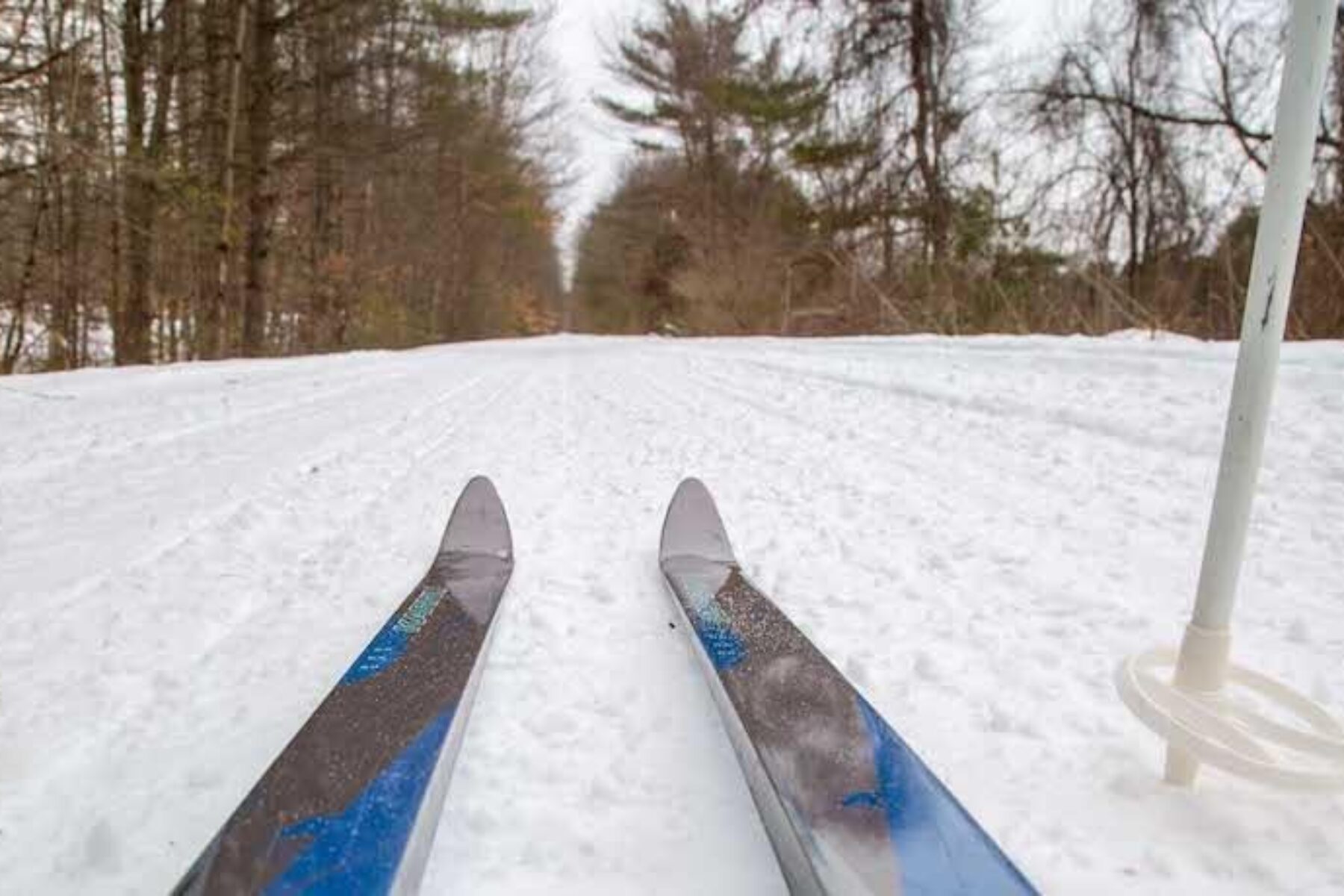
If you are trying to find new and fun ways to get outdoors this winter, why not add cross-country or Nordic skiing to your list? Here are a few quick Cross-Country Skiing 101 tips to help you give it a try! For a few hints on prep and technique, check out REI’s “Beginner’s Guide to Cross-Country Skiing.”
Don’t let the word ski intimidate you—it’s not as hard as hard as you think; the real word to focus on is “country”—as you can see the local landscape in a whole new light, while keeping your feet a bit warmer than walking, since you slide above the snow. And while it’s good for your legs, of course—it’s also a great upper-body and core workout.
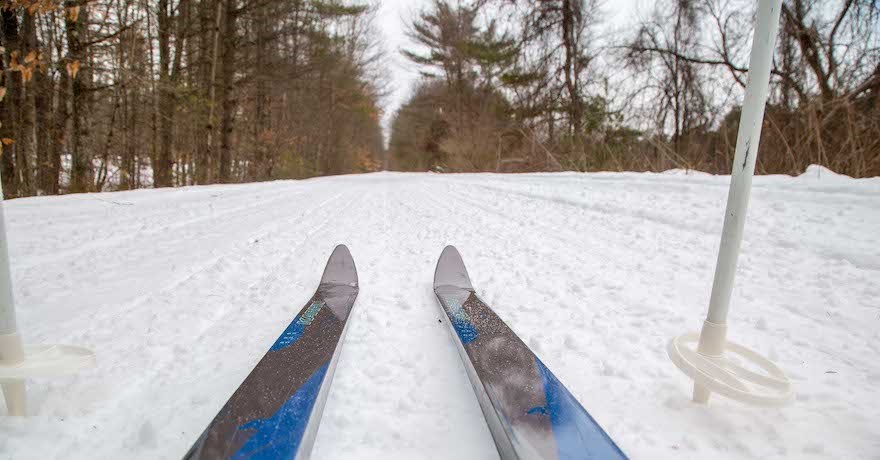
Assess Your Equipment Needs
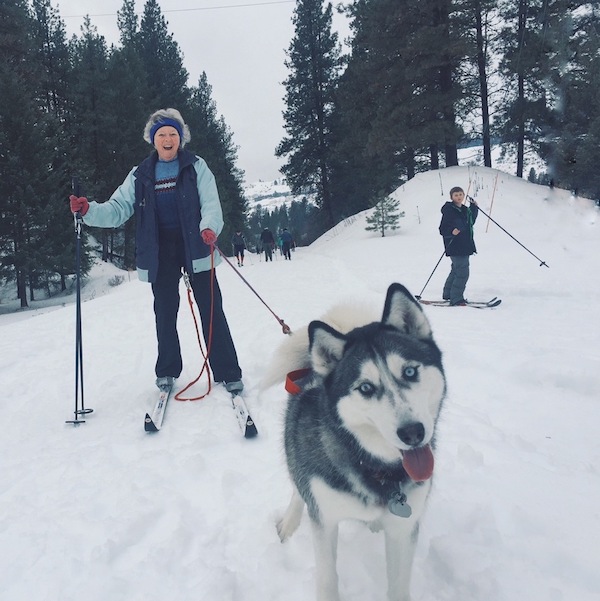
Nordic equipment—skis, boots, bindings and poles—costs much less than downhill (Alpine) equipment. If you decide that you’re in it for the long term, you may wish to acquire your own equipment—new or used—so you can always be new-snow ready.
New gear can be an investment—but you don’t have to break the bank. If you’re watching your budget, why not try out that old equipment from you parents or a friend? Much of it is made to last, and the technology hasn’t changed that much. I have several pairs of skis and boots—and my favorite for many conditions and different terrains are my 43-year-old leather boots with “pin” bindings.
Also, some parks and trails around the country have ski-equipment rental places at or near their main trailheads … it just might take a little research to find them (see next section).
Tip: If you do invest in skis, or you inherit or borrow some, buy some glide wax. This will help with sticky snow in poor conditions. Ski shops now sell “back-country” skis that have metal edges that make for better control in icier conditions, but you don’t have to have them. (The key is to go at your own pace and choose your terrain.)
Find a Good Cross-Country Trail Near You
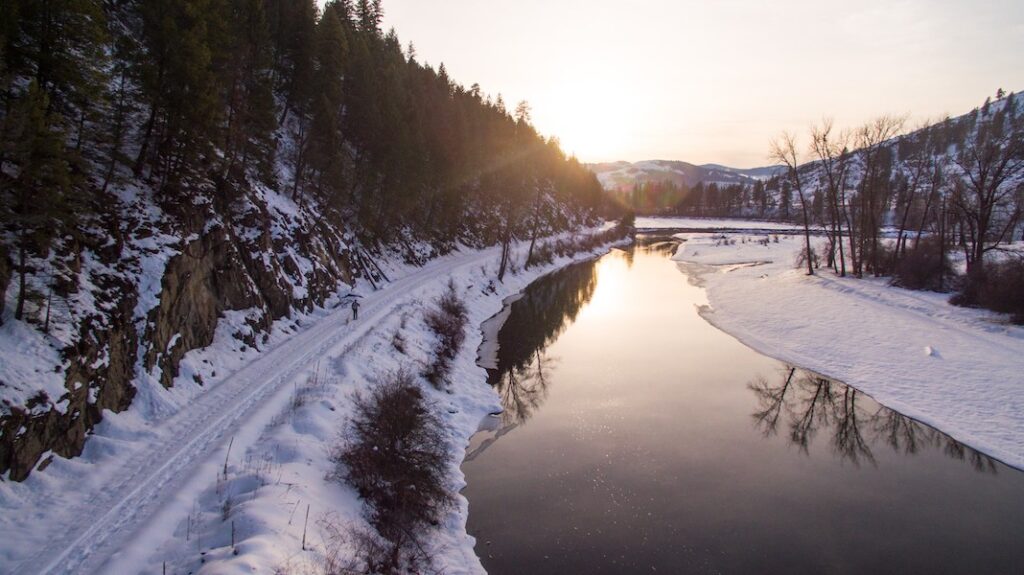
Rails-Trails make for really wonderful cross-country skiing surfaces since most railroads were built with straight and relatively flat grades (usually 3% or less)—and using rail-trails generally means no fees and no lines. Many other back-country trails and greenways also permit cross-country skiing, and some trails also groom their routes in the winter.
To find a good local cross-country trail in all 50 states, check out TrailLink.com, RTC’s free trail-finder website, which catalogues nearly 40,000 miles of multiuse trails, including maps, directions, trailheads, amenities, user reviews and ratings, photos and contact information for the local trail manager. Currently, TrailLink lists some 1,200 trails with the cross-country ski designation, and most trails, even if the activity is not listed, likely permit the activity, though you’ll want to read up on the routes/terrains first. You’ll also want to explore what trailheads make sense for your needs, and what amenities (or nearby services) are available (note that some amenities close in the winter.)
A couple other helpful resources include TrailLink’s list to top cross-country skiing trails, and its Cross-Country Skiing Trails resources page, where you can search for great close-to-home routes by state!
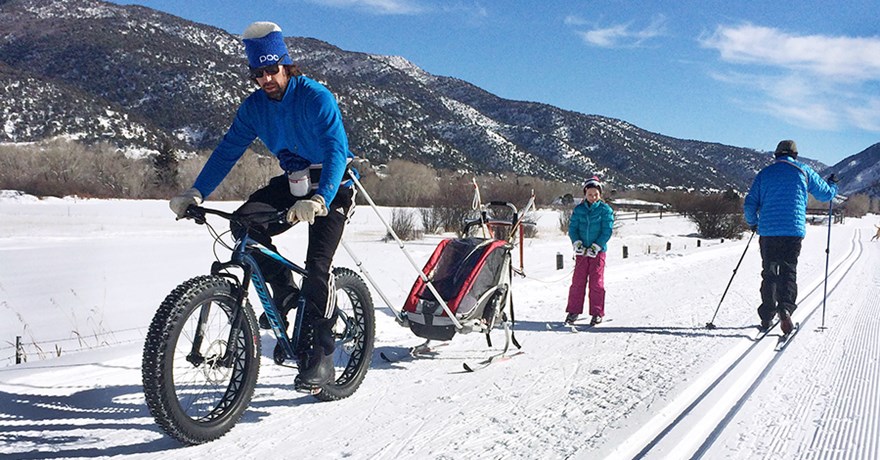
Snow and Go
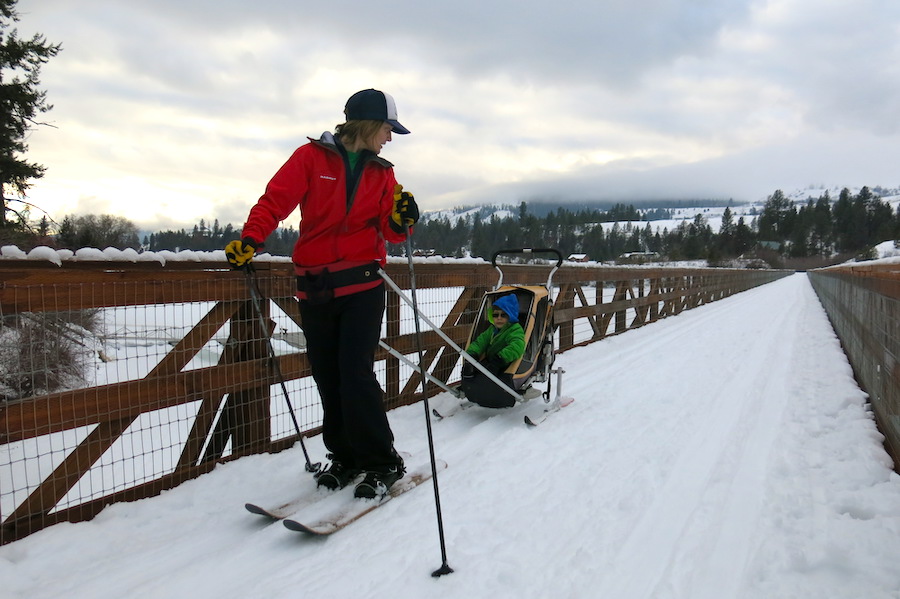
Snow can be unpredictable just about anywhere these days, so if you get a good 3–4 inches, don’t wait—just go! Today’s snows don’t stick around as long as they used to, so don’t wait for a better time. The chance of a quick melt, even if a refreeze occurs, could lead to poor conditions. I live in Pennsylvania, a “tweener” state—that is, one without consistent cold weather—so I hope for a few days at least close to home and (when it’s safe to travel) plan longer weekends or vacations up north. If you already live in the states bordering Canada, or live in the Rockies, then you have cross-country-ski centers with groomed trails and ski rentals. Lucky you!
Some Tricks for Hills
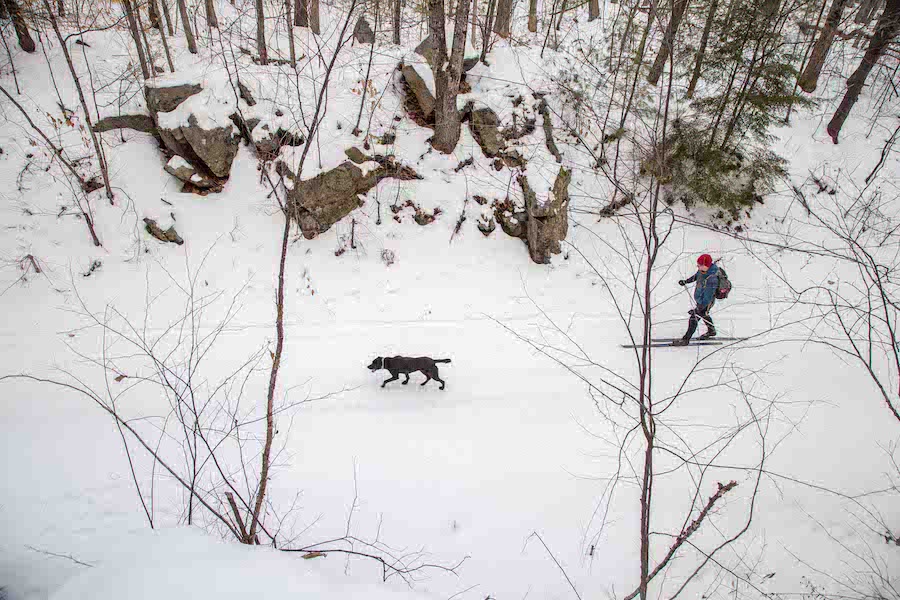
Don’t let the possibility of encountering some difficult terrain like hills put you off trying it. Many rail-trails have gentle grades—but of course, you’re bound to encounter hills, and if you decide to explore a nearby park or other open public space, that likelihood increases. Just like with bicycling, if you get out of your confidence/fun zone and don’t want to get too tired, get off your skis for a little and walk. Fortunately, today’s easy clip-in/clip-out ski-binding technology makes this option a breeze.
In time you can challenge yourself. Try first skiing up a short hill using the “herringbone” technique where you simply turned your feet out. Then in time, try a decline. And while it may seem odd—practice falling and getting up. Yep, trust me! On a flat spot, practice a few controlled falls to each side. This will give you confidence and make you safer. All skiers fall occasionally, so get good at it!
But remember, the ultimate key is to find a pace and speed that’s right for you!
Wear Layers, and Start Slightly Cool
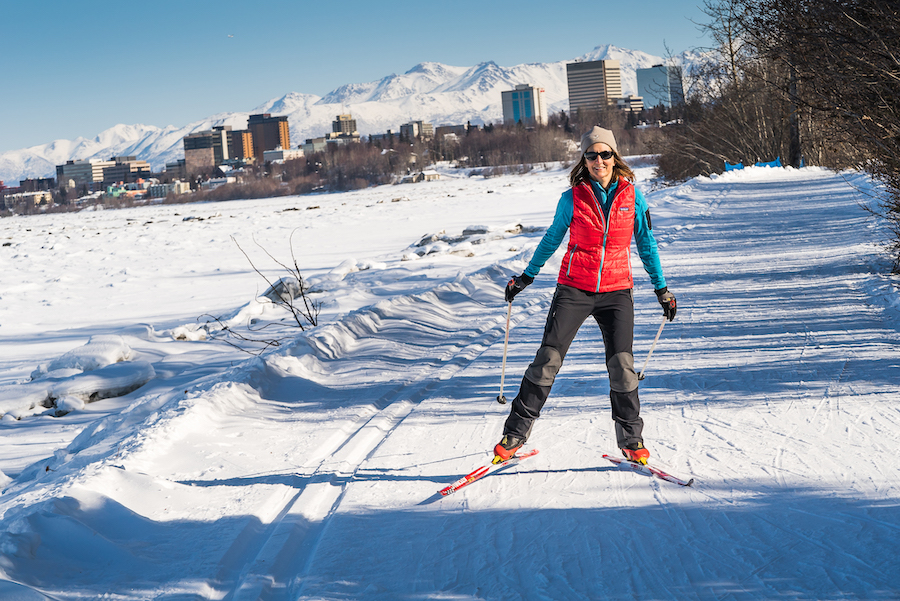
Just like pedaling, don’t overdress. Start cool, not cold, but cool—because you will warm up. There’s nothing worse than overheating and sweating, which will make you colder. You may need to worry about where to store your peeled-off garments. Tying them around your waste won’t last long (in terms of utility). Invest in an inexpensive backpack or fanny pack with a water bottle holder and enough room to stuff a light windbreaker and snack.
For more tips on how to gear up for cold weather and winter trail activities, check out “How to Adapt Trail Activities and Gear for Cold and Winter Conditions” on the TrailBlog.
Water, Water Everywhere
But it’s frozen, so bring your own. (But I do enjoy a snow popsicle sometimes!) As you go for longer and more challenging trips, keep remembering to hydrate. “A top-off” beforehand is equally as important as what you bring. Some fanny packs, like those made for runners, have “quick grab” water bottle holders. You will drink more if it’s readily accessible than if you have to take a pack off your back and/or unpack other things. Only use sport drinks if you have worked extremely hard for at least an hour; otherwise, they just turn to sugar. Also, to help you recover, make sure you always have some extra beverages and snacks in the car (whether you think you’ll need them immediately or not).
Speaking of food, Après ski is not only a reward for downhill Alpine skiers. So, plan ahead with a well-paired beverage and small plate at home—you earned it!
Winter Trail Tips
- Wintertime Trail Fun
- Winter “Share the Trail” Etiquette and Safety Tips
- Seven Hot Tips for Cold-Weather Biking / Siete buenos consejos para andar en bicicleta en climas fríos
- Rail-Trail Tips for Cross-Country Skiing (A 101 Guide) / Consejos para senderos ferroviarios para esquí de fondo (una guía 101)
- The Magical World of Snowshoeing: A How-To Guide for Trails) / El mágico mundo de las raquetas de nieve: una guía práctica para senderos
- How to Adapt Trail Activities and Gear for Cold and Winter Conditions
- 10 Rail-Trail Winter Wonderlands
When you subscribe to Rails to Trails magazine, you’ll have access to many other features like this one. Our magazine is a premium of Rails-to-Trails Membership. Join today to start receiving the magazine!

Donate
Everyone deserves access to safe ways to walk, bike, and be active outdoors.
